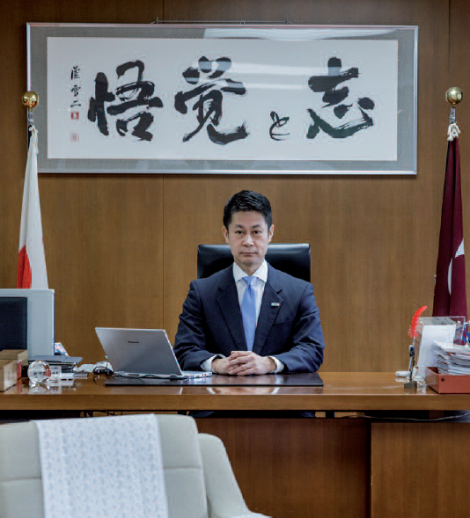
Elected governor of Hirsohima Prefecture in 2009, Yuzaki Hidehiko has succeeded in setting up his agenda for change.
The governor of Hiroshima Prefecture does not lack ambition. He wants to make changes so that the Japanese can rediscover the pleasure of a better way of living, with his region serving as a model.
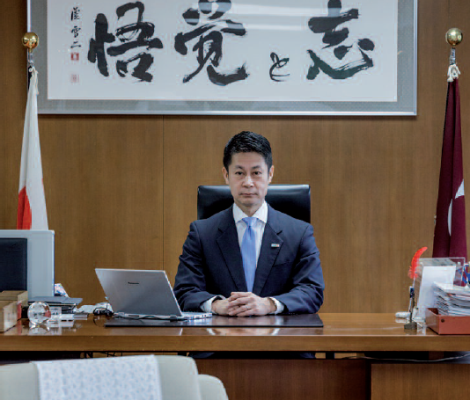
Why did you go into politics and why did you want to become governor of Hiroshima?
YuzakIHidehiko: It’s a long story, but I’ll try to cut it short. Before I came to that decision, I was a company CEO. I wanted to use my experience for the good of my hometown: Hiroshima. I’d also worked for the government. This knowledge of both the private sector and government administration seemed to me to be the ideal combination when aspiring to run a prefecture such as Hiroshima, which needed to regain its dynamic character. That’s why I chose to go into the political arena and run for governor.
How have things changed since you were first elected in 2009?
Y. H.: First of all, I think that the image people have of Hiroshima has changed tremendously. I believe that local residents, as well as a proportion of the wider population now consider our region to be a great deal more active than in the past. People have discovered a much more attractive side to Hiroshima. They get the impression that things are changing here, which is absolutely true.
Meaning…
Y. H.: I can cite the tourist industry as an example. For many years, the region tried many different strategies to encourage foreign tourists, with moderate success. We might even say it was a failure, as numbers started to drop in the 3 or 4 years before I was elected. So one of my priorities was to reverse this situation. We invested heavily in marketing and communication to make sure that media coverage of Hiroshima was improved. In terms of numbers, we went from media exposure valued at £20 million to more than £317 million over the last six years. Since then, the increased media coverage for our region has encouraged tourists to come back.
Is this why Hiroshima has recently been included in Nikkei MJ’s top brands list?
Y. H.: Indeed. 2016 has been, in terms of media exposure, an amazing year. President Obama’s visit in June was a highlight, as was the victory of our baseball team in the national championship. All of this has helped create publicity for our region, and in the end led to the journal including us on their annual list. It’s all the more remarkable and important as it’s the first time, I believe, that a prefecture has figured on the list.
You mentioned the Hiroshima Carp’s victory in the baseball championship. Do you think that this could be one of the reasons the younger generation is taking an interest in Hiroshima?
Y. H.: That’s possible, but I think we need to look at the events surrounding this success, including the return of Kuroda who decided to quit the American professional game to come back to “his” city. People were very moved by his choice. I should add that the way the team is managed is important too. In a way, the Carp are the minnows of the Japanese baseball league. The team does not have a lot of money, and does not benefit from large sponsors with the means to make up any losses the club might sustain. As a result, the team relies on sound management and a balanced budget. This means that it’s unable to finance players who might be too greedy, and has decided to invest in young players instead, training them and helping them become famous. This unusual management practice for a professional Japanese team is their trademark, and has resulted in their very large popular fan base. Hiroshima Carp also distinguish themselves from other championship teams as they have many female supporters, which is unique in this country. More than half of the spectators who come to watch the Carp play are women. The majority of Japanese find this quite incredible as they’re used to seeing stadiums filled mostly with men.
In away, does this team represent the outlook of the prefecture itself?
Y. H.:Yes I think so. When the team was created, they had no sponsors. They immediately established themselves as a citizen friendly team, with close ties to local people. Even though Mazda, the local car manufacturer, became involved financially, the economic turmoil they were going through did not allow them to offer the same support as sponsors of other teams. Since then, the Carp have had to rely on the people of the region, who have supported the club financially and intellectually during all these years. The relationship between them is particularly strong. It’s a unique situation in the country. Furthermore, we could add that the team is the only one in Japan that is presented primarily as a city’s team, as “Hiroshima’s” team. Generally, clubs are called by their names, but ours is presented either by its original name or as Hiroshima’s team. This speaks volumes about the importance of the bond between the team and the region.
In your opinion, does this help promote the region?
Y. H.: Some time ago I was in Mie Prefecture (located between Osaka and Nagoya). One of my colleagues told me about the time he was eating in a restaurant and a young woman asked him if he was from Hiroshima. When he replied that he was, she was quick to tell him that the next day she was going to see a Carp game at the Mazda Zoom Zoom stadium in Hiroshima! This young woman is part of what we call the “Carp Joshi” (the Carp girls), referring to their large nation-wide female fan base. This is really surprising, and I can’t help thinking that this promotes our region’s image. It’s also true that travel agencies organize female-only trips to Hiroshima for women who want to watch a match and take part in other other activities. They sell like hot cakes.
In what other ways has the renewed interest in Hiroshima become evident?
Y. H. : For example, we’ve started to see people come to settle in our region. Some even leave the larger cities like Tokyo to come to live in Hiroshima, but maybe what’s more interesting is that many who have no particular connection with the region have decided to move here. Over the last five years, we’ve noticed an increase in the number of new households.
And are these newcomers young?
Y. H.:We do not yet have reliable statistics on the matter, but if we study a few individual cases then we find that it is indeed younger people who are looking to take an active part in the life of the community. This is the case in Onomichi, for example. This medium sized town of 100,000 residents has a long history and strong traditions. There are many older buildings that were about to be abandoned due to their condition, and especially their lack of amenities. Well, lately we’ve noticed that young entrepreneurs moving to the city are renovating these old buildings. Some of them have been transformed into shops or housing, breathing life into neighbourhoods that were in danger of disappearing. This phenomenon is gaining momentum, and is helping to revitalize aging cities. It’s also evident on some of the islands in the Inland Sea with aging populations. Young people are settling there and trying to breathe new life into the declining communities. Our role at local government level is to support all these initiatives, and we have brought in several measures to achieve this.
Are they tax measures?
Y. H.:No. We are more about support services and development. In that sense, we’ve set up a network that facilitates contacts between people wishing to settle in our region and the communities that are able to welcome them. This is an essential job because it helps to create the conditions for people to settle down here for the long term. We also focus on training to help those who settle here make the right decisions in terms of work. This year we’re going to launch a vast, region-wide information campaign to raise awareness about the issue of revitalizing rural areas. We’re trying to advertise the different initiatives undertaken by these newcomers in order to create a virtuous circle. The example of their successful settlement arouses interest and encourages others to follow suit.
Would you give us another example?
Y. H.: I can think of the little city of Joge, which is in the middle of nowhere (laughs). In the past, it had enjoyed a long period of prosperity because it was on the road that linked the port of Onomichi to the silver mines located a little further inland. The city benefited from the mining activity until the last seams closed down. As a result, it has entered a phase of decline following the departure of many of its inhabitants and the rapid aging of those who chose to stay. Today, Joge’s situation is changing in a positive way, with the resumption of activities by younger people who are developing new opportunities, particularly in the tourism sector. As a result, the city is recovering and we see Tokyoites showing a real interest in it. It’s heartwarming.
This kind of development can only make you optimistic about the future…
Y. H.: Yes, of course, but it’s still true that we have many problems to face. One of the most important is support for small towns and rural areas. This is a very important issue, but it’s also a very difficult challenge. For a long time, as in the rest of the country, we thought that we had to develop these places in the same way as the big cities, providing them with infrastructure of all kinds. But that didn’t prevent the exodus towards urban centres. In the end, those who wanted to leave sought to live in a big city, and nothing could stop them, not even the construction of a local cultural centre. This fact made us change our approach and modified our priorities. We’ve chosen to concentrate on those who are interested in living in places with a rich history, pleasant surroundings and an exceptional living environment. But we also decided to go in search of those people with a deep desire to settle in areas that meet their expectations. In a way, we’re similar to a marriage bureau bringing together two separate destinies with the ultimate goal of making people happy. But again, it’s not a question of turning these areas into places resembling ordinary cities, because that’s not what these people are looking for. That’s how we’re hoping to bring new life into rural areas.
Are you one of those people yourself?
Y. H.: Not quite. I can’t say I’m made to live in that kind of place, but I’m very happy to give it a go. Having said that, I left Tokyo to come back to Hiroshima because I love the countryside and the activities that come with it. It’s very easy to have access to nature when you live here. For example, we’re only an hour by car away from ski resorts. And it costs less than 800 yen. For this kind of activity, a Tokyoite will have to pay at least 5,000 yen for tolls, without taking into account the time it takes to get there. We also have the sea at our doorstep…wonderful!
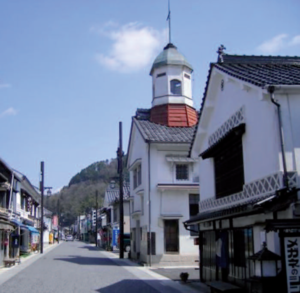
This is a good opportunity to talk about tourism, which you mentioned earlier. What are the main tourist attractions in Hiroshima?
Y. H.: First, there’s the Inland Sea, which I just mentioned, and a wealth of history. I don’t have to remind you that Hiroshima was on the road that leads from the country’s western frontier to Kyoto, which all the people and goods that entered Japanese territory travelled along. This has, of course, helped to provide a solid base for various tourist activities. We’re also trying to explore new ways of meeting the changing needs of tourists. The idea is to encourage individuals to discover the region for themselves by strengthening transport links, such as developing cycle routes.
Could you give us some examples of places you particularly like in the area?
Y. H.: That’s a trick question that’s not easy to answer (laughs). As I said earlier, I like skiing, so when I can, I head to the slopes in the area, which are top quality. When the skiing season is over it’s great to go mountain biking. However, I understand it isn’t necessarily the easiest thing to do when you’re a tourist just passing through. So the first thing I would recommend is climbing up to the summit of Mount Misen on the island of Miyajima. Whether at sunrise or sunset, there’s a magnificent view. In 2013 we built an observatory designed by the architect Sambuichi Hiroshi, which fits into the landscape perfectly. It’s well worth going there. Another impressive place is the island of Osaki Kamijima, in particular Mount Kan no mine (453 metres), from where one can see the Inland Sea and 115 of the islands that are scattered across it. It’s truly a divine place. Perhaps this is why its name means the “Peak of the Gods”. And on the way down you can stop at the local spa where you can take a bath with views over the sea and islands.
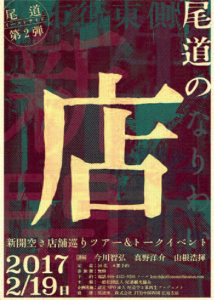
the revitalization of the town.
In the spring, JR West will launch its Mizukaze cruise train with two stops in your prefecture. What do you think of this initiative?
Y. H.: I am in favour of it as this will help diversify what’s on offer for tourists. Besides, this type of train aims to offer the very best, which will help strengthen the reputation of Japan and our region.
How do you imagine Hiroshima in the next 5 to 10 years?
Y. H.:Our main challenge is depopulation, combined with the rapid aging of our society. It’s a difficult phenomenon to halt, but we must strive to transform our society so that it provides living conditions that allow families to flourish. We must work less and be more productive to live more happily. This should encourage people to have children. That’s why we must focus on innovation to ensure better productivity, but also on modernizing education. We need to launch a bit of a cultural revolution, especially in our attitude to work. We spend far too much time at work. If we manage to reduce it, while still increasing production, we’ll save time for ourselves and we’ll be more satisfied with our lives.
Would Hiroshima Prefecture like to be at the forefront of this revolution?
Y. H.: Absolutely. We are trying to create a new lifestyle for the Japanese. It’s not easy. There’s much to be done, but the ultimate goal is to change the way we live in Japan. And in that sense, it’s true that I should like Hiroshima to be leading the way (laughs).

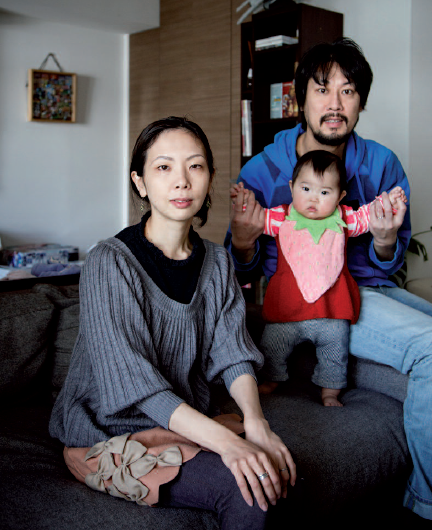

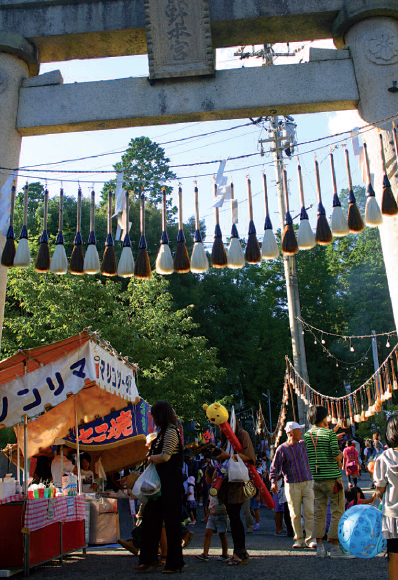
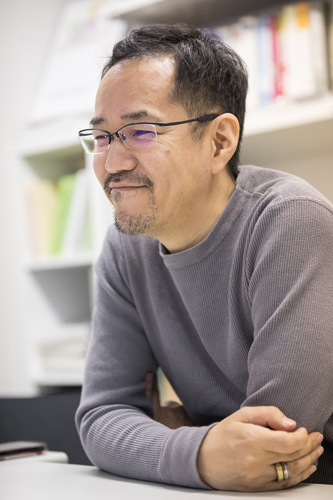
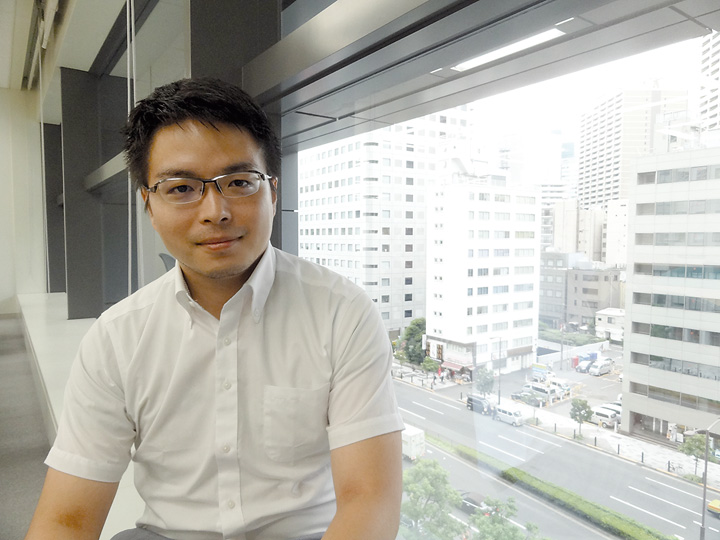
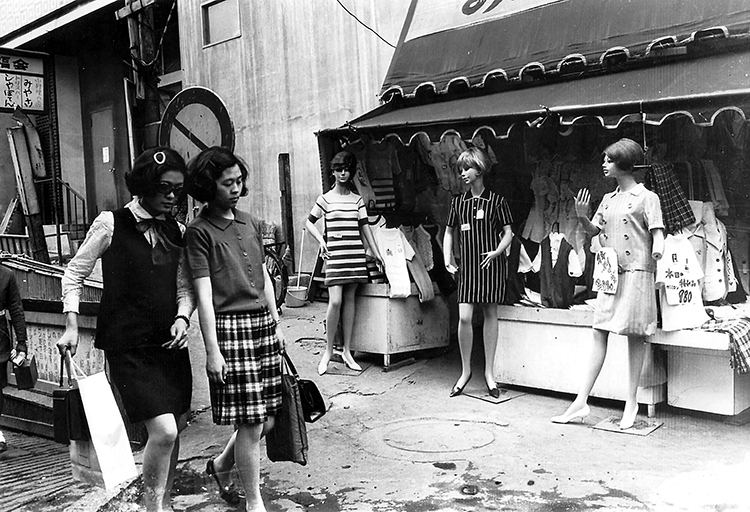
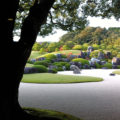
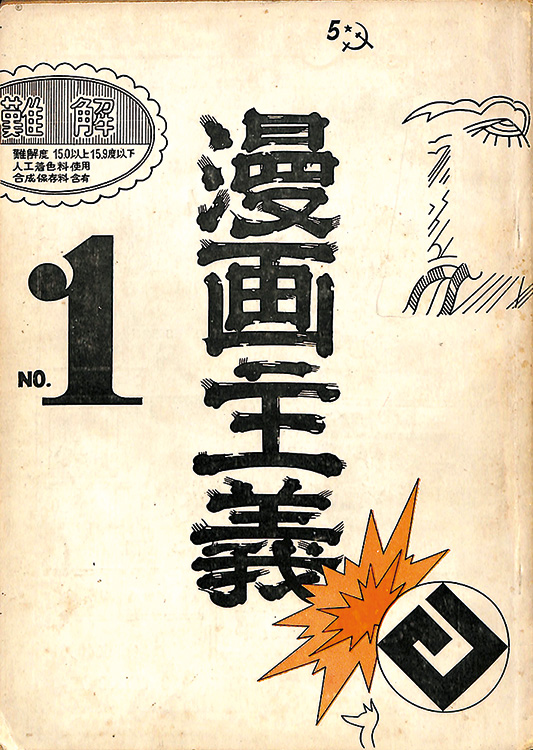
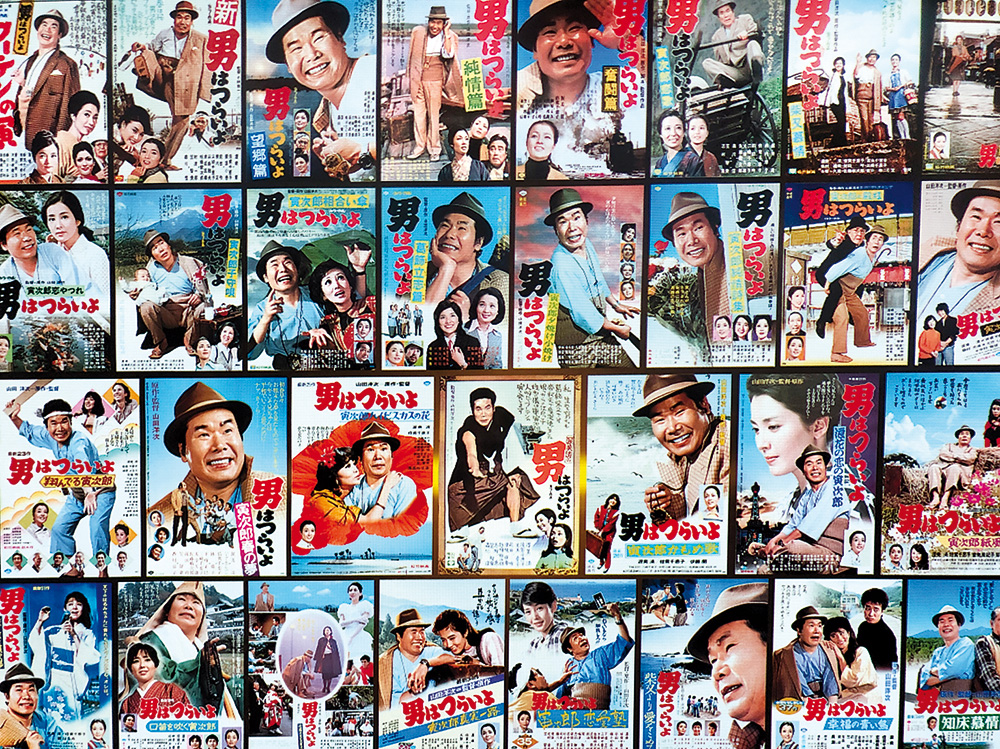

Leave a Reply